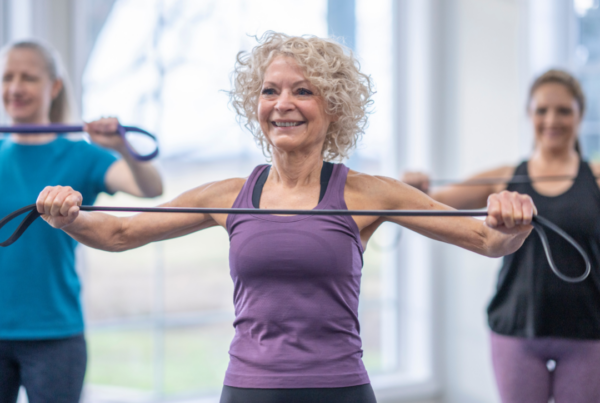Iron deficiency and its associated symptoms are common, particularly during perimenopause. These symptoms often overlap with those caused by hormonal changes, making accurate diagnosis important.
The role of iron
Iron is vital for many physiological functions, including:
-
Oxygen transport: Iron is a key component of haemoglobin, the protein in red blood cells responsible for carrying oxygen from the lungs to the rest of the body.
-
Energy production: Iron supports cellular processes that produce energy.
-
Immune function: Adequate iron is necessary for maintaining a healthy immune system.
-
Muscle health: Iron is required to produce myoglobin, a protein that stores oxygen in muscle cells.
-
Metabolic processes: Iron is involved in various enzymatic reactions throughout the body.
The body carefully regulates iron levels, as both deficiency and excess can be harmful.
Causes of iron deficiency
Iron deficiency can result from inadequate intake, such as from a diet low in iron-rich foods or increased loss, due to heavy menstrual bleeding, gastrointestinal blood loss, intense physical exercise, or certain medical conditions.
Importantly, iron deficiency can occur with or without anaemia (a low haemoglobin level). Many symptoms may be present even when haemoglobin is within the normal range.
Symptoms
Common symptoms include:
-
Fatigue
-
Headaches
-
Brain fog
-
Sleep disturbances
-
Mood changes
-
Hair thinning or loss
-
Restless leg syndrome
If anaemia develops, additional symptoms such as palpitations and shortness of breath on exertion may also appear. These symptoms can easily be mistaken for those of perimenopause or menopause, highlighting the importance of proper evaluation.
Diagnosis
Diagnosis typically involves a blood test to measure:
-
Ferritin, the protein that reflects iron stores. In symptomatic individuals or those with ongoing losses, aiming for a ferritin level in the mid-normal range may be more appropriate than simply avoiding the lower limit.
-
Full blood count, to check haemoglobin levels.
-
Transferrin saturation, particularly useful when ferritin levels may be falsely elevated due to inflammation, infection, or obesity.
Ferritin tests may need to be repeated if results are unclear or confounded by other conditions.
Treatment
Managing iron deficiency involves two key strategies:
-
Addressing the underlying cause of iron loss, such as:
-
Treating heavy menstrual bleeding using hormonal therapies (e.g., combined oral contraceptive pill, progestogen-releasing intrauterine device, or short-term high dose cyclic progestogens).
-
Investigating and managing other sources of loss (e.g., gastrointestinal bleeding including early bowel cancer, coeliac disease, urinary losses, or high physical activity levels).
-
-
Replenishing iron levels through:
-
Dietary changes.
-
Oral iron supplements.
-
Iron infusions, in cases of very low ferritin or poor response to oral supplementation.
-
Dietary iron
The recommended daily intake (RDI) of iron for menstruating women aged 31–50 is 18 mg per day in Australia. This requirement reflects ongoing iron losses from menstruation and is significantly higher than that of men (8 mg/day) or postmenopausal women (8 mg/day).
Iron in the diet is found in two forms: haem iron, found in animal products, is efficiently absorbed (about 15–35%) and non-haem iron, from plant sources, is less efficiently absorbed (about 2–20%) and more affected by other dietary factors.
Haem iron sources (higher absorption)
-
Red meat (e.g. beef, lamb): ~2.5–3.0 mg per 100g
-
Poultry (e.g. chicken, turkey): ~1.0–1.5 mg per 100g
-
Fish and shellfish (e.g. sardines, mussels): ~1.0–2.0 mg per 100g
-
Eggs: contain ~0.6–1.2 mg of iron per egg (mostly non-haem iron)
Non-haem iron sources (lower absorption)
Although some plant foods contain a high total iron content, the bioavailability is much lower than from animal sources.
Examples:
-
Lentils, chickpeas, beans: ~2.0–3.5 mg per cup (cooked)
-
Tofu: ~3.0 mg per 100g
-
Fortified breakfast cereals: up to 7.0 mg per serve
-
Nuts and seeds (e.g. pumpkin seeds, cashews): ~2.5 mg per 30g
-
Leafy greens (e.g. spinach): ~3.6 mg per 100g—but with limited absorption due to oxalates
For example, 100g of cooked beef may provide 3.0mg of iron toward your daily intake requirements but only deliver 0.5–0.6 mg of absorbable iron, while the same amount of spinach may provide only 0.1 mg, despite similar total iron content.
Enhancing iron absorption can be achieved by pairing meals with vitamin C-rich foods (e.g. capsicum, citrus, tomatoes) to improve non-haem iron absorption; avoiding tea, coffee, calcium-rich foods, or antacids within 1–2 hours of iron-rich meals; combining haem and non-haem sources to maximise absorption of plant-based iron.
Iron supplementation
For those who need iron supplementation, several oral preparations are available in Australia:
-
Ferrous sulfate (e.g. Ferrograd-C): commonly used, contains 325 mg (105 mg elemental iron)
-
Ferrous fumarate (e.g. Ferro-F-Tab): 200 mg (65 mg elemental iron)
-
Iron polymaltose complex (e.g. Maltofer): a gentler alternative with fewer GI side effects; 100 mg elemental iron per tablet
Common side effects of iron tablets include nausea, constipation, dark stools, and abdominal discomfort. To reduce side effects start with one tablet every second day and gradually increase to daily dosing if tolerated, take tablets on an empty stomach for best absorption, but if stomach upset occurs, taking them with food is acceptable, avoid taking with calcium-rich foods or antacids.
Iron supplementation is typically required for 3–6 months, depending on the severity of the deficiency and response to treatment. Even after symptoms improve, treatment should continue until iron stores (ferritin) return to a normal range.
A rise in ferritin and haemoglobin is usually seen within 4–8 weeks, but full replenishment of iron stores can take up to 6 months. Blood tests should be repeated after 8–12 weeks to assess response and adjust treatment if needed.
Iron infusions
Iron infusions are intravenous treatments used to rapidly replenish iron stores. They are typically administered as ferric carboxymaltose (e.g. Ferinject) or iron polymaltose.
Indications include:
-
Severe iron deficiency (especially with anaemia) where oral iron is not tolerated or effective.
-
Chronic conditions (e.g. inflammatory bowel disease) affecting absorption.
-
Ongoing heavy menstrual bleeding with poor response to oral therapy.
-
Severe iron deficiency when rapid correction is needed.
Iron infusions are usually administered in a clinic setting over 15–60 minutes. They are generally well tolerated but can occasionally cause allergic reactions, skin staining (if leakage occurs), or delayed flu-like symptoms.
Correcting iron deficiency can alleviate symptoms that are often misattributed to hormonal changes, especially during perimenopause.
This information is for general educational purposes only and does not constitute medical advice. Please see your health professional for advice that is personalised to you.
Key Take Aways
Heavy, frequent periods can result in iron deficiency
Symptoms of iron deficiency can mimic those of perimenopause and menopause
Menstruating perimenopausal women need 18mg of iron/day whereas postmenopausal women only need 8mg/day






